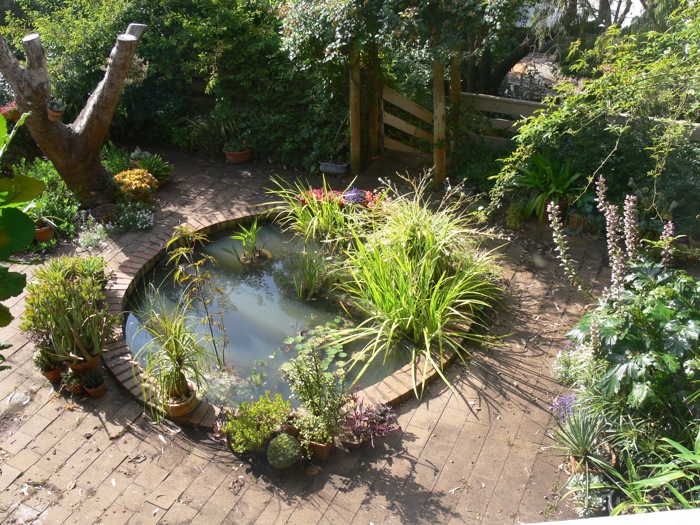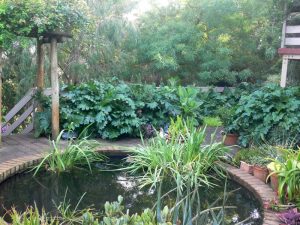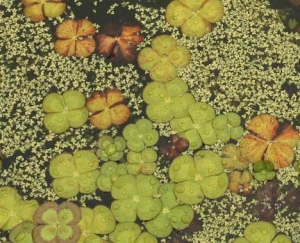I feel certain that my love of water stems from the fact that my star sign is Pisces, with my birthday being on the cusp with Aquarius. My moon sign is also Aquarius. Both have water in their makeup with the fish and the water bearer. So my love of water becomes transferred to the need for water in my gardens.
In our garden in the Clare Valley in South Australia, it was nigh on impossible to keep water in a bird bath, let alone a pond, during summer. The high evaporation rate with high heat meant that we were forever filling any receptacle at least once per day. Here in SW Victoria, with a much milder climate the water is only removed by the constant presence of birds flapping in numerous bird baths scattered throughout the garden.

Timandra by the Sea – the pond that has been resurrected
We also have a pond; a part of the garden that I love. We have seats here where we can watch the fish, hovering dragonflies or listen to frogs in the pond in spring. We have also placed a rock leaning against the edge of the pond, as a means of exit for the frogs. I have read that frogs can drown if they cannot get out of ponds with steep sides. Unfortunately our pond, made by former owners is not as deep as I would like, and has erect sides – no tapering towards the edges. So the rock is in place for our frogs.
There is a part of this pond that has a slightly deeper aspect – I doubt intended; more chance I think. In this spot I have used a white Nymphaea alba – it is deciduous through winter, but flowers well in summer even in our mild climate.

Hibiscus coccinea
In another section I have the water Hibiscus – Hibiscus coccinea which grows on long stems up to 2 metres. What a magnificent sight when in full bloom in mid summer.
As an avid collector of strappy or architectural plants, this also includes my pond. We have Scirpus zebrinus and Triglochin procerum – an Australian native grass known as Water Ribbon which also grows in the wetland on our north east boundary.

A plant that I am unsure about is the Parrot Feather, Myriophyllum aquaticum, which is supposed to be a rapid spreader. Mine certainly isn’t; maybe this is because we don’t get the degree of heat required to spread it or else it is Myriophyllum variifolium. It was a purchased plant from a reputable supplier, so one should assume that it is the latter form. They look very similar, excepting the pace of growth. The true Parrot Feather Myriophyllum aquaticum is regarded as an environmental weed in many areas.
 One that I really like for its beautiful mosaic foliage similar to that of a water lily is Nymphoides crenata which has vivid yellow flowers in summer. Ours doesn’t flower well, probably because the water level isn’t high enough over the crown and our summer temperatures are probably too mild. It is worth growing for the foliage alone.
One that I really like for its beautiful mosaic foliage similar to that of a water lily is Nymphoides crenata which has vivid yellow flowers in summer. Ours doesn’t flower well, probably because the water level isn’t high enough over the crown and our summer temperatures are probably too mild. It is worth growing for the foliage alone.

Marsilea drummondii
I must not forget the nardoo – Marsilea drummondii. A great plant growing in water 30 to 60 cms deep; it has foliage like a four leaf clover that floats on top of the water and is green all year.
The commonest reason for plant loss in my pond has been the degree of winter cold. The water lilies are fine, they are winter dormant anyhow; it is the evergreens that prefer a milder winter that are lost. But if one can learn from this experience and then source plants that tolerate cold winters, then the eventual display will be very rewarding; like the garden proper, the more diversity that there is, the better for creating a healthy pond ecosystem.
If you need more ideas about aquatic plants, pond maintenance or general pond advice, the site www.ozwatergardens.com.au is a wealth of valuable information. You can even source plants through this site.
